BAFF receptor antibody for mantle cell lymphoma therapy
- PMID: 33747637
- PMCID: PMC7939563
- DOI: 10.1080/2162402X.2021.1893501
BAFF receptor antibody for mantle cell lymphoma therapy
Abstract
Mantle cell lymphoma (MCL) is an aggressive form of B cell non-Hodgkin's lymphoma and remains incurable under current treatment modalities. One of the main reasons for treatment failure is the development of drug resistance. Accumulating evidence suggests that B cell activating factor (BAFF) and BAFF receptor (BAFF-R) play an important role in the proliferation and survival of malignant B cells. High serum BAFF levels are often correlated with poor drug response and relapse in MCL patients. Our study shows that BAFF-R is expressed on both MCL patient cells and cell lines. BAFF-R knockdown leads to MCL cell death showing the importance of BAFF-R signaling in MCL survival. Moderate knockdown of BAFF-R in MCL cells did not affect its viability, but sensitized them to cytarabine treatment in vitro and in vivo, with prolonged mice survival. Anti-BAFF-R antibody treatment promoted drug-induced MCL cell death. Conversely, the addition of recombinant BAFF (rhBAFF) to MCL cells protected them from cytarabine-induced apoptosis. We tested the efficacy of a humanized defucosylated ADCC optimized anti-BAFF-R antibody in killing MCL. Our data show both in vitro and in vivo efficacy of this antibody for MCL therapy. To conclude, our data indicate that BAFF/BAFF-R signaling is crucial for survival and involved in drug resistance of MCL. Targeting BAFF-R using BAFF-R antibody might be a promising therapeutical strategy to treat MCL patients resistant to chemotherapy.
Keywords: Mantle Cell Lymphoma; adcc; baff; drug resistance; nk cells; therapy.
© 2021 The Author(s). Published with license by Taylor & Francis Group, LLC.
Conflict of interest statement
J.W is an employee at Novartis pharma. R.P is a scientific advisory board member of Luminary Therapeutics
Figures
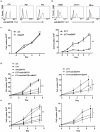
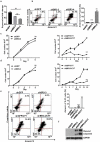
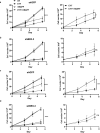
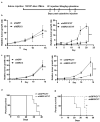
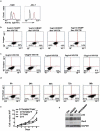

Similar articles
-
The antibody drug conjugate VLS-101 targeting ROR1 is effective in CAR T-resistant mantle cell lymphoma.J Hematol Oncol. 2021 Aug 28;14(1):132. doi: 10.1186/s13045-021-01143-w. J Hematol Oncol. 2021. PMID: 34454548 Free PMC article.
-
The rGel/BLyS fusion toxin specifically targets malignant B cells expressing the BLyS receptors BAFF-R, TACI, and BCMA.Mol Cancer Ther. 2007 Feb;6(2):460-70. doi: 10.1158/1535-7163.MCT-06-0254. Epub 2007 Jan 31. Mol Cancer Ther. 2007. PMID: 17267661
-
Non-canonical NF-κB Plays a Pivotal Role in Non-Hodgkin's Lymphoma.Cell Biochem Biophys. 2015 Jul;72(3):681-5. doi: 10.1007/s12013-015-0518-7. Cell Biochem Biophys. 2015. PMID: 27352187
-
Role of BAFF/BAFF-R axis in B-cell non-Hodgkin lymphoma.Crit Rev Oncol Hematol. 2014 Aug;91(2):113-22. doi: 10.1016/j.critrevonc.2014.02.004. Epub 2014 Feb 23. Crit Rev Oncol Hematol. 2014. PMID: 24629840 Review.
-
The emerging role of lenalidomide in the management of mantle cell lymphoma (MCL).Best Pract Res Clin Haematol. 2012 Jun;25(2):185-90. doi: 10.1016/j.beha.2012.04.005. Epub 2012 May 18. Best Pract Res Clin Haematol. 2012. PMID: 22687454 Review.
Cited by
-
Tumor Microenvironment and Immunotherapy-Based Approaches in Mantle Cell Lymphoma.Cancers (Basel). 2022 Jun 30;14(13):3229. doi: 10.3390/cancers14133229. Cancers (Basel). 2022. PMID: 35804999 Free PMC article. Review.
-
Cell therapy for a rare disease- hairy cell leukemia variant.Oncoimmunology. 2024 Dec 31;13(1):2432062. doi: 10.1080/2162402X.2024.2432062. Epub 2024 Nov 27. Oncoimmunology. 2024. PMID: 39604816 Free PMC article.
-
CAR-T Cells Shoot for New Targets: Novel Approaches to Boost Adoptive Cell Therapy for B Cell-Derived Malignancies.Cells. 2022 May 31;11(11):1804. doi: 10.3390/cells11111804. Cells. 2022. PMID: 35681499 Free PMC article. Review.
-
Systemic lupus erythematosus: pathogenesis and targeted therapy.Mol Biomed. 2024 Oct 30;5(1):54. doi: 10.1186/s43556-024-00217-8. Mol Biomed. 2024. PMID: 39472388 Free PMC article. Review.
-
B Cell Activating Factor Induces Drug Resistance in Hairy Cell Leukemia Variant.Biomedicines. 2025 Apr 7;13(4):890. doi: 10.3390/biomedicines13040890. Biomedicines. 2025. PMID: 40299479 Free PMC article.
References
-
- Reed DR, Portell CA.. Mantle cell lymphoma. Novel therapeutics for rare lymphomas. Springer, Cham. 2020;69–13.
Publication types
MeSH terms
Substances
Grants and funding
LinkOut - more resources
Full Text Sources
Other Literature Sources
